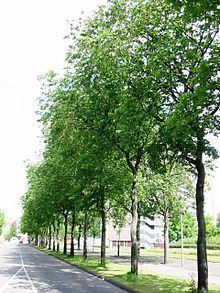Cultivar 'Bea Schwarz' | Origin Netherlands | |
 | ||
People also search for Ulmus × hollandica 'Cinerea' | ||
The elm cultivar Ulmus × hollandica 'Bea Schwarz' was cloned (as No. 62) at Wageningen in the Netherlands, by the elm disease committee, ostensibly from a selection of Ulmus minor found in France in 1939. However, specimens of the tree grown in the UK and the United States are treated as Ulmus × hollandica (after Fontaine ).
Contents
Description
The tree was considered of poor growth and shape.
Pests and diseases
Moderately resistant to Dutch elm disease, and more resistant to Coral Spot fungus Nectria cinnabarina than its forebear 'Christine Buisman'.
Cultivation
Commercial production was discontinued soon after its release in 1948. Nevertheless, its moderate resistance to Dutch elm disease saw it, or its selfed progeny, successfully used in later Dutch hybridizations, notably 'Nanguen' = Lutèce.
Notable trees
The largest known examples in the UK grow along Crespin Way, Hollingdean, Brighton; planted in 1964, they measured 19 m high by 50 cm d.b.h. in 2009.
Hybrid cultivars
Etymology
The tree is named for Bea Schwarz, the Dutch phytopathologist who identified Dutch elm disease in the 1920s.
